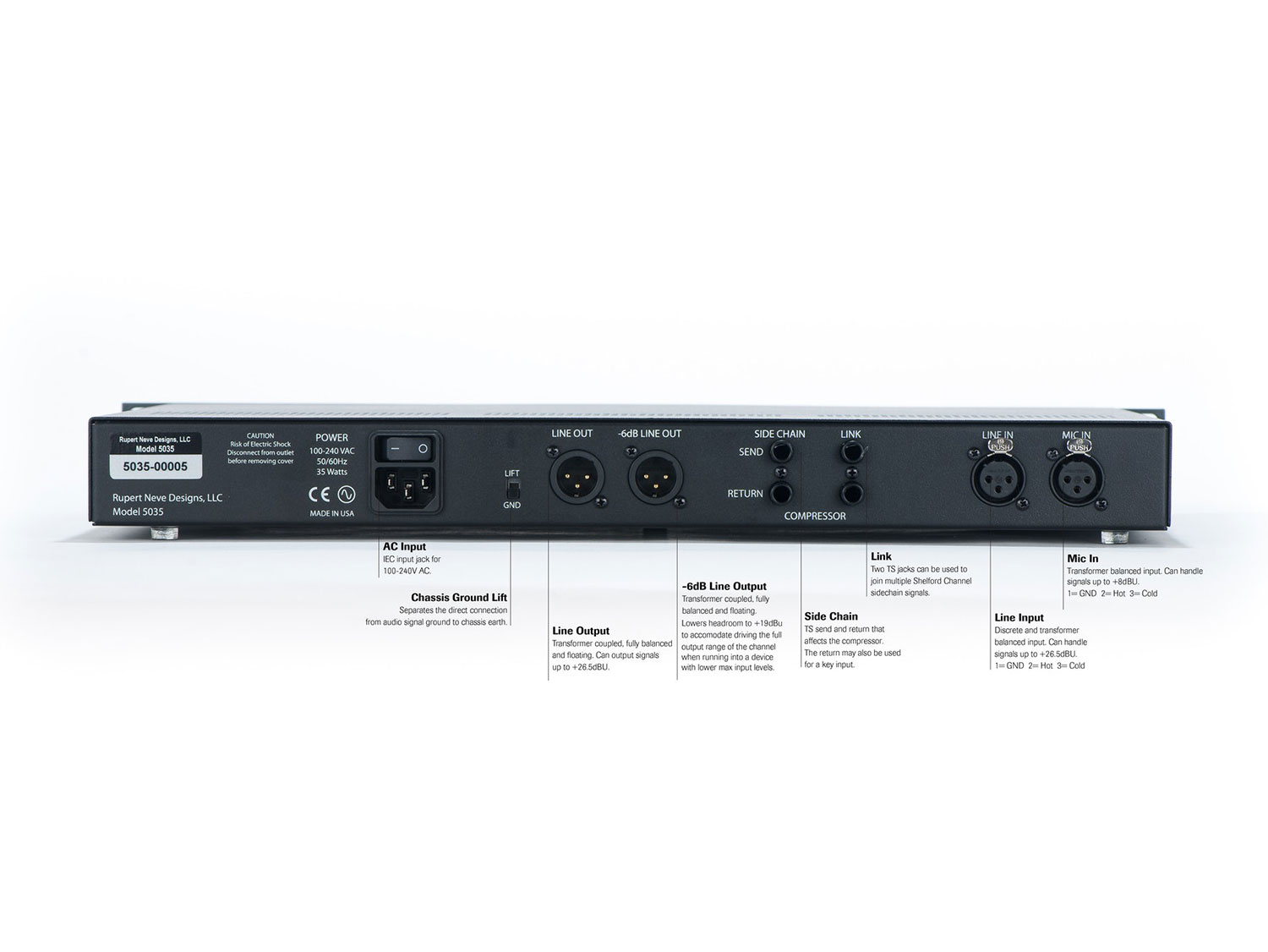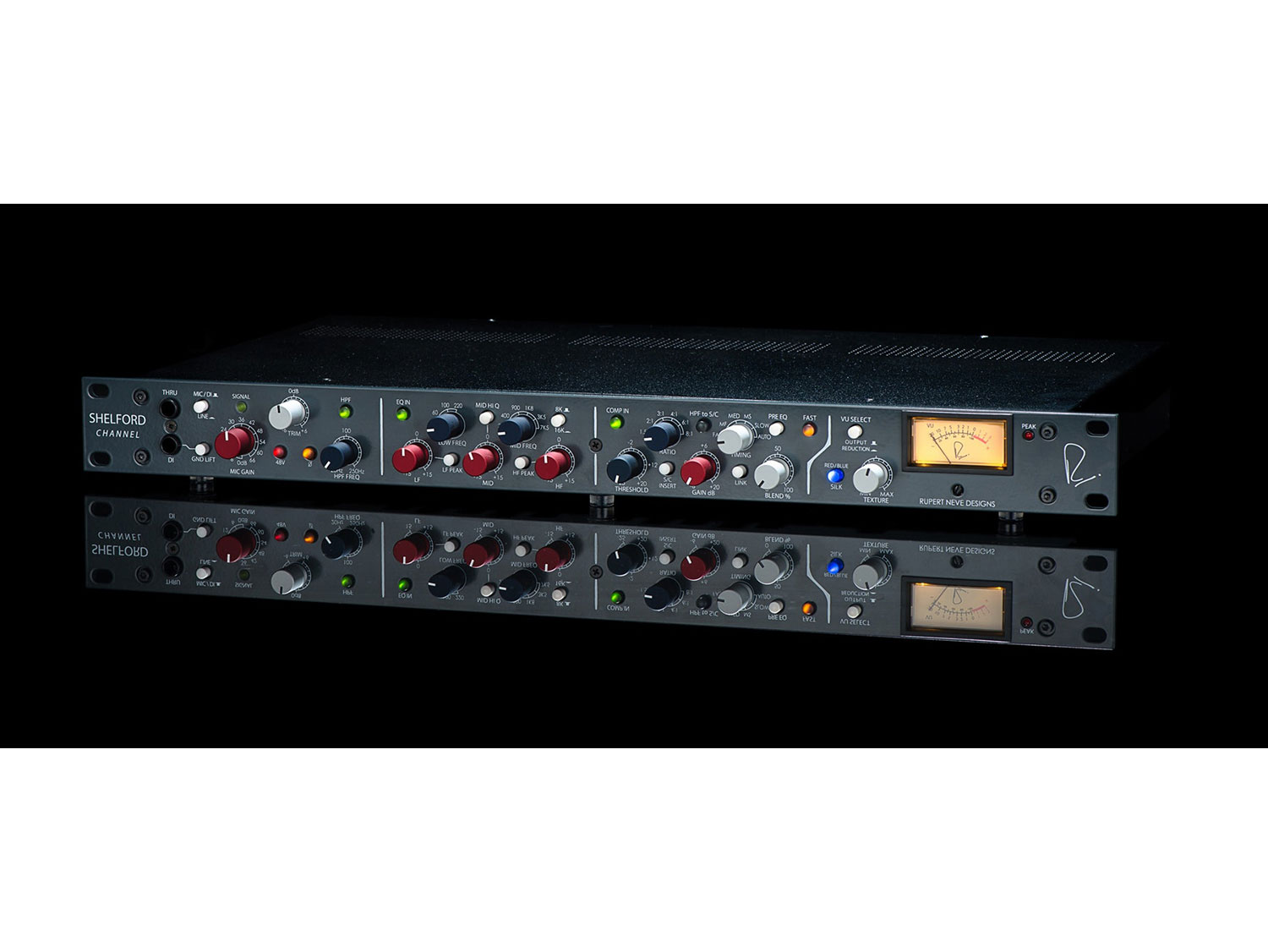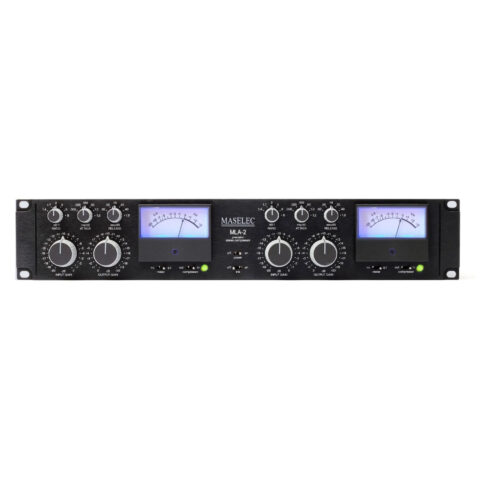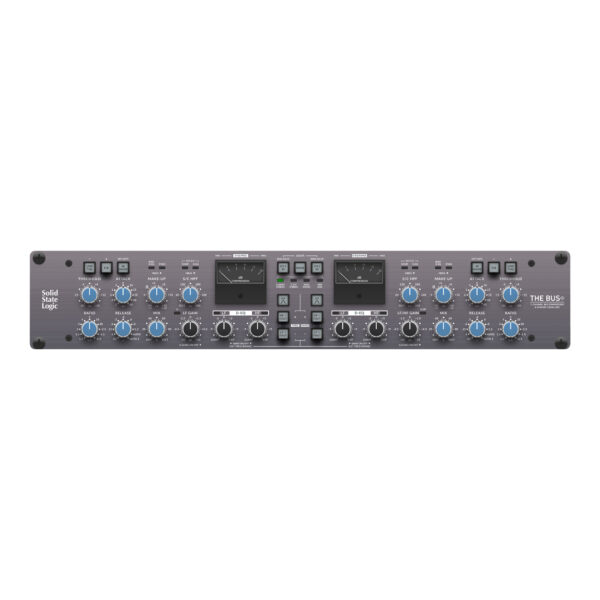Rupert Neve Designs Shelford Channel
A Whole New Vintage – Over fifty years in the making, the Shelford Channel is the definitive evolution of the original technologies in Rupert’s classic console modules like the 1073, 1064, 1081 & 2254, thoughtfully advanced and refined for the 21st century studio. The Shelford Channel is built around Rupert Neve’s first new transformer-gain, class-A microphone preamplifier in over 40 years, the “best-of-the-classics” inductor EQ section from the Shelford 5052, a tone-packed Diode bridge compressor, the analog power of variable Silk saturation, a new dual-tap transformer output stage for maintaining headroom or allowing the full driving of the Channel without clipping standard converters, and twice the operating voltage of vintage designs.With richly-colored tonal options for making bold statements with your music, and precisely-engineered detented controls for recall, the vintage-inspired Shelford Channel maintains the soul of Rupert’s classic designs with new levels of versatility, delivering what can only be described as the combined essence of fifty years of Rupert Neve’s designs.
The Input Stage and Transformer Gain Mic Pre
Like Rupert’s designs from his time in Little Shelford , the Shelford Channel’s preamplifier uses a directly-coupled transformer input with gain provided by the custom transformer itself – a first in over 40 years for Rupert Neve. This new custom-designed input transformer, along with its careful integration with the surrounding circuitry, is critical to the Channel’s bold and instantly recognizable character.
With this classic topology, the input transformer design is extraordinarily challenging, and the RN4012 transformer utilized in the Channel went through many generations before Mr. Rupert Neve was satisfied. This transformer provides the first 15dB of gain, with the rest of the 72dB of gain provided by the discrete, class-A amplifier blocks controlled by a stepped attenuator and precision trim pot. Whereas Rupert’s more modern designs (e.g. the Portico Series) utilize a combination of TLAs (Transformer-Like Amplifiers) followed by an input transformer for pristine low & high frequency detail and galvanic isolation (see comparing input topologies notes), the Shelford Channel’s design directly couples the input transformer to the microphone line. When this new transformer is combined with its surrounding class-A input amplifiers, the result is the unmistakably smooth high and low frequencies of the most famous vintage modules in the world, yet with incredibly low noise and superior isolation. The mic pre section also includes a sweepable 20-250Hz high-pass filter, Mic / Line selection, 48V phantom power, and polarity reverse.
The Dual Tap Transformer Output with Variable Silk
Similarly to the input stage, the new output stage is designed to provide the texture and power of Rupert’s classics while allowing for significantly more versatility in tone.
The dual-tap output for the Channel’s RN2042 square-core output transformer creates both high and low headroom outputs without compromising the channel’s performance. The high headroom tap is designed capture a more pristine sound at high levels, avoiding non-linear coloration of the output stage and taking full advantage of the Shelford’s higher voltage design. The low headroom tap however is optimized to allow an engineer to drive the full voltage range of the Channel – adding dynamic tone with these same non-linear “colorations” – without clipping most professional interfaces. On drums, vocals, guitars and other instruments, this output lets you easily hit the transformer’s “sweet-spot” of non-linear harmonic content, which can bring a recorded performance to life in a way that other effects can’t.Another advantage of the output stage versus vintage modules is the addition of the variable Silk circuitry, which allows complete control over the harmonic content and saturation of the output transformer. With Silk disengaged, the output is modern and pristine, yet still retains Rupert’s signature larger-than-life transformer sound. When engaged, the harmonic content – predominantly 2nd order and 3rd order with no high order distortion – can be dialed up to several times beyond that found in his vintage units like the 1073. This is further controlled with Silk Red and Blue modes, which emphasize harmonic content generated by the source’s high frequencies (Red) or low frequencies (Blue).
The Direct Input
The Hi-Z front panel input uses the same discrete class-A FET with transformer topology as the Rupert Neve Designs RNDI, but it utilizes the new RN4012 input transformer directly into the microphone preamp for gain. This design, made world-famous by the best-selling RNDI, delivers unmatched clarity to high-Z sources, with a substantial low-end presence and incredibly smooth high frequencies. The DI also includes a passive THRU output to feed a separate amplifier.
The “Best Of The Classics” EQ
The 3-band, custom-tapped inductor EQ on the Shelford Channel was inspired by our favorite portions of Rupert’s vintage EQ designs. The low frequency band is primarily based on the 1064 – renowned for its creamy, resonant bass. Unlike the 1064 however, the LF band on the Channel can be used as either a shelf or a peak filter; adding punch, dimension, and immense control to your low end.
The Shelford Channel’s inductor midrange band is based on Rupert’s 1073, ideal for sweetening vocals and instruments while bringing them ever-so-slightly forward in a mix. Additionally, the mid frequency band’s proportional “Q” response makes it well-suited for minimizing problematic frequencies in a source.
The Channel’s high frequency band is a hybrid vintage / modern design, using capacitor-based topologies to achieve richer tone with enhanced control. As Rupert originally intended with his most prized classic designs, each EQ section uses low-feedback, class-A electronics to prevent low-level artifacts and harshness from detracting from the tonal shaping. The EQ circuit itself, however, is a decidedly modern design using techniques and components that were simply not available 40 years ago, and should not be considered a “clone”.
The Diode Bridge Compressor
Like the Inductor EQ and Transformer Gain microphone preamp, the diode bridge compressor in the Shelford Channel is based on the same topologies found in Rupert’s vintage designs – such as the 2254 – but it expands on these early design by incorporating full-wave rectification and a slew of new control features.
While Rupert’s vintage diode bridge compressors have a uniquely punchy and warm response, they were also quite limited by inflexible attack times, high noise, low headroom, and imprecise controls. With the Diode Bridge Compressor, Rupert Neve Designs is able to recapture the vibe-filled, “in your face” sound of those classics with a new level of precision and flexibility, allowing the compressor to be fully utilized on virtually any source. Where the VCA compressor found in the Portico II Master Buss Processor delivers unrivaled transparency, the Shelford Channel’s Super Diode Bridge Design is all about making a statement with compression. The compressor includes controls for TIMING, THRESHOLD, RATIO, BLEND, MAKE UP GAIN, FAST (attack-release modifier), HPF to Side Chain, Pre-EQ, Bypass, Side Chain Insert, and Stereo Link for the new high-performance diode bridge.
TIMING is a six-position switch that affects both attack & release settings for Auto, Fast, Medium Fast, Medium, Medium Slow, Slow. The FAST button speeds up the attack for every setting – highly useful when it becomes vital to clamp down on transients. These settings provide a vast range of attack / release combinations, all with easy auditioning & recall.
The RATIO control has 6 steps between 1.5:1 to 8:1 to achieve subtle or extreme reductions, and the THRESHOLD control has 31 steps detented between -25dBU and +20dBU for a wide variety of input levels. MAKE UP GAIN has 31 steps from -6dB to +20dB, and is affected by the blend setting – more on that later. The HPF to SC button moves the Swept HPF in the mic pre to the compressor side chain, reducing the impact of low frequencies in the compressor’s response. The SC INSERT allows more elaborate equalization of the side-chain signal, accessible via TS I/O on the rear panel.
The BLEND control is incredibly useful on the Diode bridge compressor, because it allows an extremely colored compressor sound and massive amounts of gain reduction to be gradually mixed into the signal – giving the compressor a potential for subtlety and precision not found in its predecessors.
Double Voltage Power
The Shelford Channel uses an internal power supply with +/- 24V rails using a standard IEC cable input versus a single 24V rail in Rupert’s vintage design. This extra voltage helps improve dynamic range and noise performance for improved sonic detail. The power supply is auto-switching for reliable performance anywhere in the world from 100 to 240VAC, 50-60Hz.
Specifications
- Transformer Gain Mic Input: Like Rupert’s classic designs, the Shelford Channel’s mic input uses direct transformer coupling with 15dB of gain in the transformer itself. This extremely sensitive design utilizes the new RN4012 transformer, which spent years in development. The resulting sonic performance allows the mic pre to capture the more forward mid’s and slightly rounded off high and low frequencies of vintage designs like the 1073.
- Direct Input: The Hi-Z front panel input uses the same discrete class-A FET with transformer topology as the Rupert Neve Designs RNDI, but it utilizes the new RN4012 input transformer directly into the microphone preamp for gain. This design, delivers exceptional clarity to high-Z sources, with a substantial low-end presence and incredibly smooth high frequencies. The DI also includes a passive THRU output to feed a separate amplifier.
- Dual Tap Output: The dual-tap output for the Channel’s RN2042 square-core output transformer creates both high and low headroom outputs without compromising the channel’s performance. The high headroom tap is designed capture a more pristine sound at high levels, avoiding non-linear coloration of the output stage and taking full advantage of the Shelford’s higher voltage design. The low headroom tap however is optimized to allow an engineer to drive the full voltage range of the Channel – adding dynamic tone with these same non-linear “colorations” – without clipping most professional interfaces (Max output level +19dBU). On drums, vocals, guitars and other instruments, this output lets you easily hit the transformer’s “sweet-spot” of non-linear harmonic content, which can bring a recorded performance to life in a way that other effects can’t.
- Silk and Texture: Another advantage of the Shelford Channels’ transformer balanced output stage versus vintage modules is the addition of the variable Silk and Texture circuitry, which allows complete control over the harmonic content and saturation of the output transformer. With Silk disengaged, the output is modern and pristine, yet still retains Rupert’s signature larger-than-life transformer sound. When engaged, the harmonic content – predominantly 2nd order and 3rd order with no high order distortion – can be dialed up to several times beyond that found in his vintage units like the 1073. This is further controlled with Silk Red and Blue modes, which emphasize harmonic content generated by the source’s high frequencies (Red) or low frequencies (Blue).
- MIC/DI/LINE: Switches between microphone/direct injection input (button out) or line input (button in).
- Gnd Lift: This switch separates the direct connection from audio signal ground to chassis earth.
- Signal Present LED: This LED is dual function. When green, it indicates “Signal Presence” (a signal level of -20dBu). When red, it indicates 2-3dB below input stage clipping of the Mic/Line stage (+23 dBu while the pre actually clips at +25 dBu).
- Mic Gain: This 12-way precision rotary switch controls gain from 0 to 66 dB in 6 dB steps.
- Trim: This rotary switch provides further continuous gain adjustment over a range of +/– 6 dB.
- 48V: This push button switch engages phantom power on the microphone input. Please remember to press the mute button or turn down monitors and headphone sends or the channel the Shelford Channel is plugged into before toggling “+48” (and be especially cautious if you use pre-fader aux sends for headphones).
- Phase: This push button switch inverts the polarity of the signal path. It illuminates when engaged. (The symbol “Ø” is often used to denote opposite polarity.)
- HPF: The HPF switch engages a 12dB per octave high pass filter. The HPF potentiometer is variable from 20Hz to 250Hz, and can be used to filter out unwanted low frequencies, or in conjunction with the EQ to help shape source material. Note that engaging the HPF to S/C switch moves the HPF from the primary signal path to the compressor side-chain signal path.
- HPF Freq: This control selects the frequency at which the filter begins (-3db) to roll off low frequency signals. It is a 12 dB per octave Bessel filter designed to musically preserve important timing information while cutting low frequency noise and garbage like air conditioning rumble. We may suggest that while recording that the lowest practical setting is generally the safest because it is difficult to try to recover lows with an EQ (6 dB/oct) that may have been chopped off with a filter (12 dB/Oct).
- EQ In: This swtich engages all EQ frequency bands except the HPF.
- LF: Adjusts up to 15 dB of boost or cut at the selected low frequencies. Cut can be used as a variable, and perhaps more gentle alternative to using the HPF. Remember to reduce the signal level at the source to minimize the potential for distortion when any of the 3 bands are boosted significant







